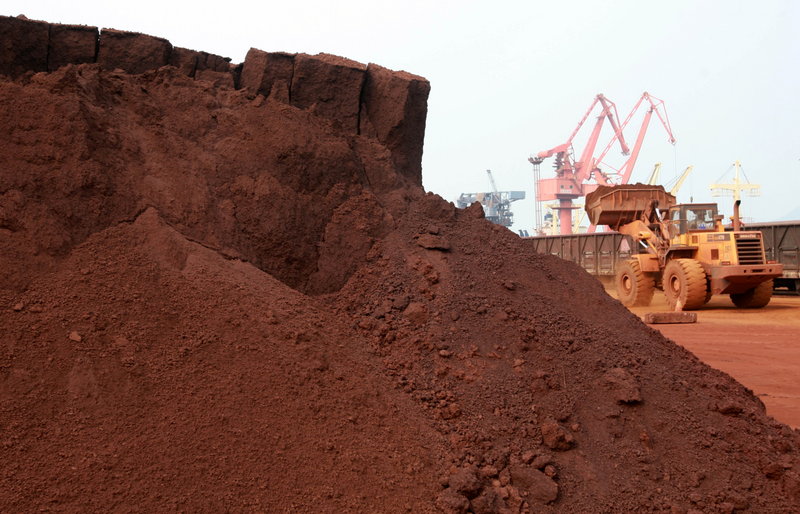SYDNEY — Bankers visiting Navigator Resources Ltd.’s gold mine in Western Australia two weeks ago soon turned their focus to a different set of metals about 620 miles to the north: rare earth.
Twelve days after their Oct. 11 tour, Navigator said it planned to sell half its rare earth assets for at least $9.9 million to create a separately listed company. The speed of the deal comes amid surging interest in the minerals used in disk drives, wind turbines and guided missiles because of looming shortages caused by China’s cuts to exports that account for more than 97 percent of world supply.
Shares of Lynas Corp. and Molycorp Inc., the biggest non-Chinese rare earth companies by market value, have more than doubled since July, when China said it would cut shipments by 72 percent in the second half of the year. Now, smaller rivals such as Navigator, Korab Resources Ltd. and Greenland Minerals & Energy Ltd. are burnishing their rare earth assets.
“It does smack essentially of the vogue investment,” said Ric Ronge, who helps manage the equivalent of $1.1 billion at Pengana Capital Ltd. in Melbourne. “It’s been used almost as an instrument to come and mine the market.”
Lynas, which is based in Sydney, estimates the global rare earth market this year at $7.8 billion, or about a week’s sales for Wal-Mart Stores Inc. Still, China’s cutbacks have raised political tension because of the strategic importance of the metals used in Toyota’s Prius hybrid cars, Research in Motion BlackBerrys, alternative energy generation and weapons.
Ensuring supplies of rare earth is “crucial,” German Economy Minister Rainer Bruederle said Tuesday. The Pentagon is due to report to Congress this month on its plans for securing resources. China says its curbs are needed to shut inefficient mines that waste resources and damage the environment.
The price of lanthanum oxide, used in hybrid batteries, has risen sixfold since the second quarter to $50 a kilogram, according to Lynas’ website.
World demand for rare earth will increase to about 225,000 tons by 2015 from 125,000 tons this year, Molycorp Chief Executive Officer Mark A. Smith said last week in an interview. 2015, China will produce 175,000 tons, with the gap to be filled mainly by Molycorp and Lynas, he said.
“It’s only going to take probably four to six significant rare earth-producing mines to fulfill global demand for the next five to 10 years,” said John Mair, general manager of business development at Greenland Minerals, whose project in Australia may start in 2015. “There is a bit of a rare earth bubble that is starting to emerge.”
Rare earth companies have to overcome regulatory and technical hurdles to develop assets, which can take years, said Trent Allan, an analyst at Resource Capital Research in Sydney.
“Everyone is looking for the 3-cent stock that suddenly could shoot to 10 cents, really on the back of hype,” said Cameron Peacock, a market analyst at IG Markets in Melbourne. “These things will crash as quickly as they’ve risen.”
Even so, the prospect of shortages and rising prices hasn’t been enough to lure the manager of the world’s biggest mining fund.
Rare earth is “not like producing a bar of gold,” said Evy Hambro, who oversees $14.2 billion at BlackRock Inc.’s World Mining Fund. “You’re producing a basket of commodities of whose prices you’re never really certain. They have lots of different applications and those applications change the whole time.”
Send questions/comments to the editors.



Success. Please wait for the page to reload. If the page does not reload within 5 seconds, please refresh the page.
Enter your email and password to access comments.
Hi, to comment on stories you must . This profile is in addition to your subscription and website login.
Already have a commenting profile? .
Invalid username/password.
Please check your email to confirm and complete your registration.
Only subscribers are eligible to post comments. Please subscribe or login first for digital access. Here’s why.
Use the form below to reset your password. When you've submitted your account email, we will send an email with a reset code.